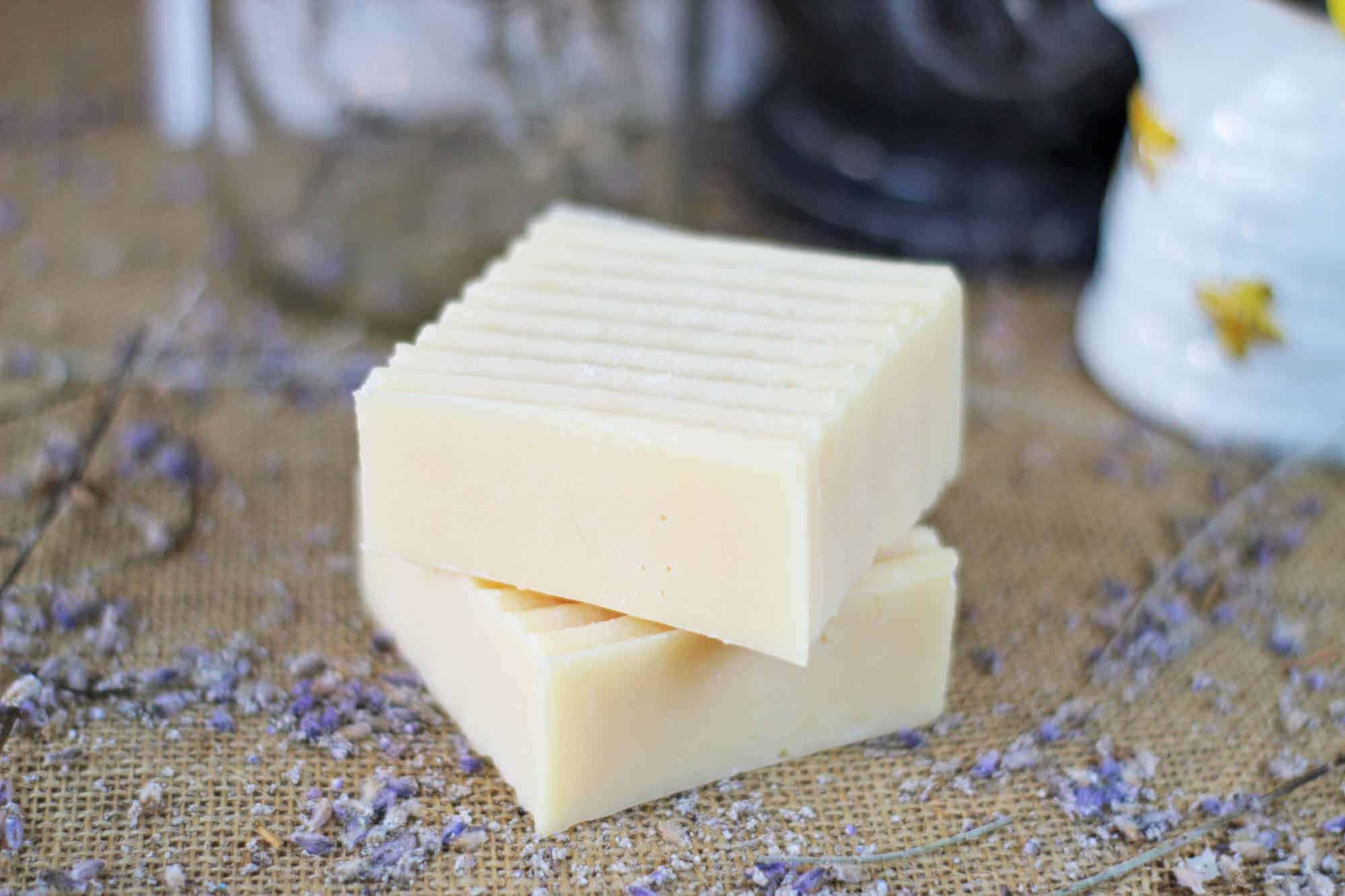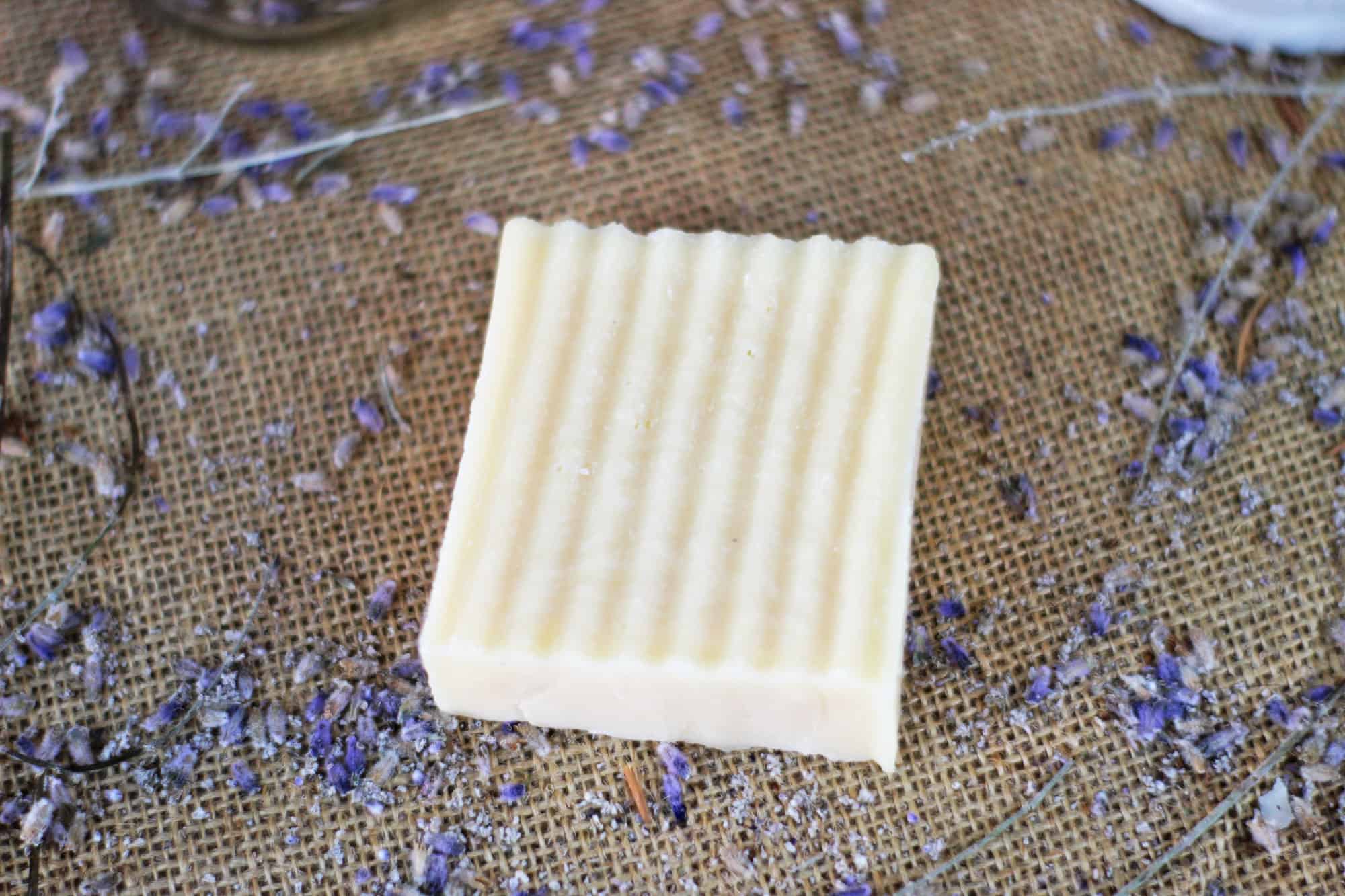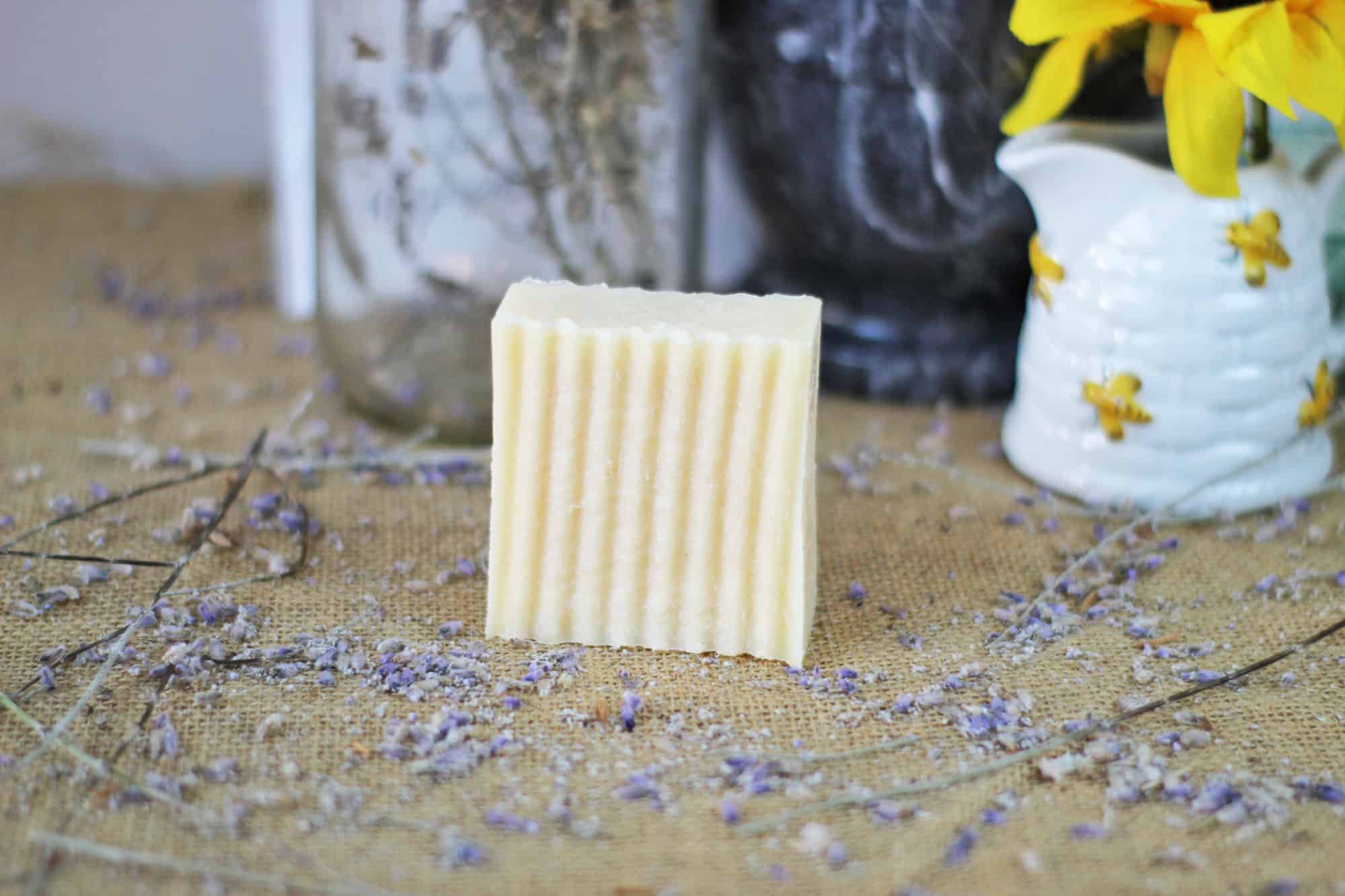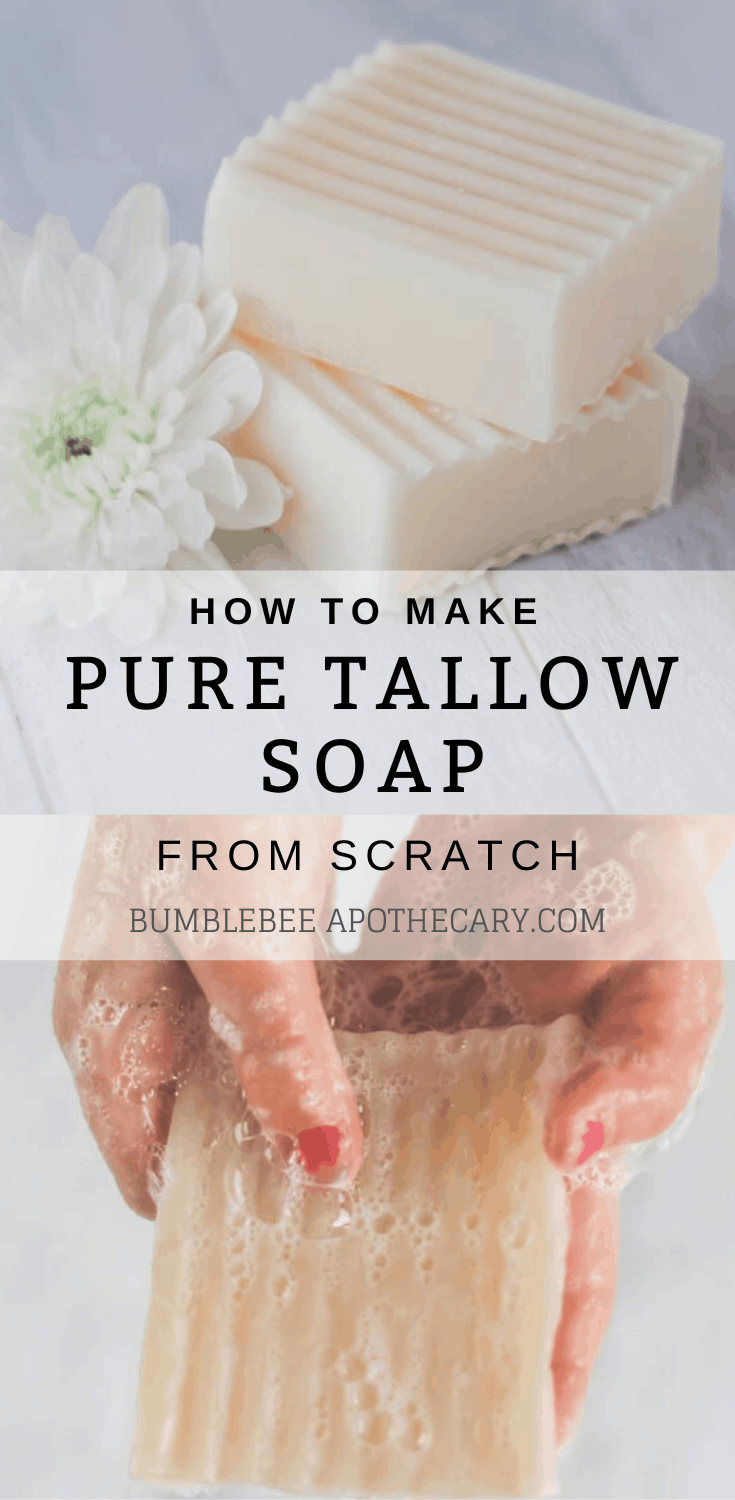Pure tallow soap recipe
If you’re a fan of grass-fed tallow, you’ll love this simple and pure tallow soap recipe. It’s perfect for beginners looking to make soap from scratch.
As the owner of a skincare shop (which you can explore here), I’ve been crafting soaps with a blend of tallow, coconut oil, and olive oil for a while, and the results are amazing! The combination of oils works wonderfully together, enhancing each other’s benefits. However, after receiving numerous requests from my customers for a pure tallow soap, I decided to create this recipe to meet their needs.

Why use tallow for soap making?
If you’ve been following me for a while, you know how much I adore grass-fed beef tallow. It’s truly amazing, packed with nutrients that are fantastic for the skin.
I’ve previously discussed what tallow is and why skin loves grass-fed tallow. You can dive deeper into its benefits here.
Tallow is the perfect fat for soap making. It’s easily accessible, adds both hardness and creaminess to soap bars, and is incredibly nourishing for the skin. I love using it on its own in this pure tallow soap recipe or mixing it with other oils for added benefits.
For more reasons why I include tallow in my soap recipes, check out the full details here.
A true homesteader’s soap
I also love the fact that our homesteading ancestors made tallow soap like this for their own use. Making it ourselves today feels like taking a step back in time, reconnecting with a simpler, more sustainable way of living. It’s a wonderful tradition to continue, and it’s amazing to see how these old methods still benefit us today.

Things to know about soap making
If you’re new to making soap from scratch, there are a few safety precautions you should keep in mind. Soap making requires lye, which turns the oils into soap. Don’t worry—there’s no lye left in the finished soap after the curing process, but we do need to handle it with care during the process.
Lye is highly alkaline, and the lye water or soap mixture can burn your skin if it splashes on you. I recommend wearing gloves, long sleeves, and eye protection when working with lye. Additionally, when mixing the lye into the water, some fumes are released, so it’s best to do this outdoors.
That’s all! While these precautions might seem a bit intimidating at first, don’t let them discourage you from learning how to make soap from scratch. Once you get the hang of it, it’s such a fun and rewarding activity. If you follow the safety guidelines, you’ll be just fine.
I also have a post where I go over the soap-making process and share the essential equipment you’ll need. I recommend checking it out before you start!
Customize it
Like many other DIY skincare items, this pure tallow soap recipe can be easily personalized with your favorite essential oils. Whether you choose a single scent or get creative with a blend, the possibilities are endless!
Keep in mind that some essential oils are more potent as soap scents than others. For example, citrus oils tend to be too mild to provide a strong fragrance. Some of my personal favorites for soap are peppermint, lavender, and lemongrass.
If you prefer a more traditional approach, you can also skip the essential oils altogether, creating an unscented version just like the homesteaders used to make. This unscented option is especially good for those with very sensitive skin, who may find it more soothing.

Pure tallow soap recipe directions
INGREDIENTS:
- 32 oz. tallow
- 4.2 oz. lye
- 12.16 oz. water
- 1.5 fl. oz. essential oils (optional)
INSTRUCTIONS:
- Weigh the tallow and place it into a crockpot. It’s easiest to melt the tallow before weighing it. If the tallow is below 100°F, turn the crockpot on low to gently heat it.
- Weigh the water in a heat-safe container or sturdy plastic bucket, and weigh the lye separately.
- Check the temperature of the tallow. You want it to be around 100°F. Let it cool if necessary.
- Once the tallow has reached 100°F, take the lye and water outdoors. Wear gloves and safety goggles, then carefully and slowly pour the lye into the water. Stir gently.
- Once the lye water turns from cloudy to clear, leave it to cool for about 10 minutes.
- Carefully pour the cooled lye water into the tallow.
- Use an immersion blender to mix the soap. After a few minutes, it will become creamy and start to thicken. Continue blending until it reaches “trace,” a light pudding consistency.
- Add the essential oils (if using) and blend again to incorporate them into the soap.
- Pour the soap mixture into molds. Cover the top with wax paper and wrap the molds in towels to insulate.
- After 24 hours, remove the soap from the mold and slice it into bars.
- Let the soap cure in a well-ventilated area for about 4 weeks before using.
Pure tallow soap recipe video
CONCLUSION
In conclusion, making pure tallow soap from scratch is a simple and rewarding process that allows you to create a natural, nourishing product for your skin. By following the steps carefully and taking the necessary safety precautions, you’ll be able to craft your own homemade soap using high-quality ingredients like grass-fed tallow. Whether you choose to add essential oils for fragrance or leave it unscented, this soap provides all the benefits of tallow, offering a creamy, skin-loving bar that’s perfect for everyday use. Enjoy the satisfaction of making your own soap while embracing a traditional, time-tested method!







